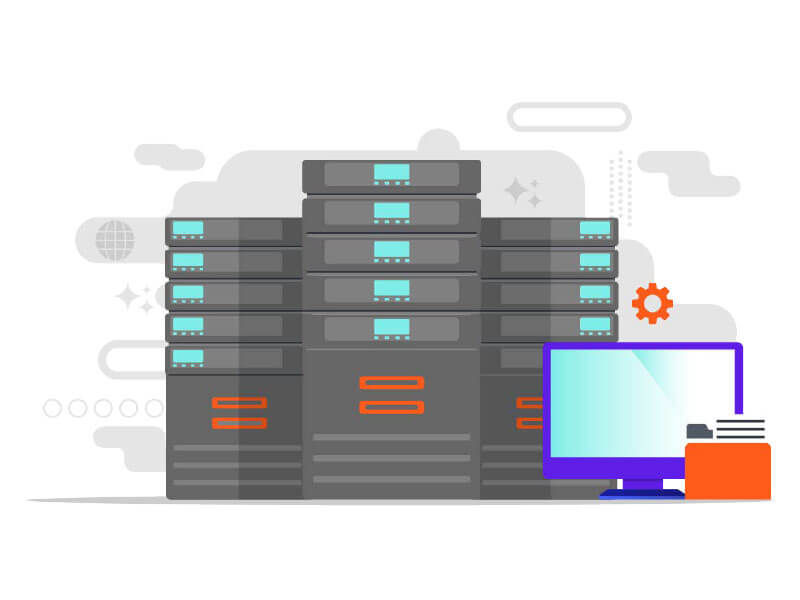Vertiv™ Avocent® ADX Ecosystem Automates and Speeds IT Management Duties
Organizations are managing a growing IT device fleet, and that trend is only going to accelerate with the growth of edge computing. While currently 10 percent of enterprise-generated data is created outside of traditional data centers or cloud infrastructures, by 2025 this figure will reach 75 percent, according to Gartner. That’s due to multiple factors, including fast-paced digital transformation initiatives, hybrid work models, and application innovation with the Internet of Things and 5G. The technology intensity of organizations is rocketing forward, and there’s no looking back.
So, what does this mean for data center and IT teams? If they aren’t already, these teams will soon be deploying and managing devices across large-scale distributed networks. As a result, many teams want to evolve processes and technologies now to be able to deploy and manage sites and devices at scale. However, security is always top of mind. As IT teams increasingly manage infrastructure remotely, they also want to lock down processes and sessions to only authorized users. Recent widespread hacks have reinforced the fact that IT teams need to consider security first as they adopt remote processes and continually search for and eliminate vulnerabilities that could be exploited by malicious parties.
What IT Teams Need from Remote Management Tools Right Now
As IT teams evaluate IT management platforms, they want to:
- Plan for infrastructure diversity: IT teams need a single management platform that can handle both enterprise and edge sites with heterogenous infrastructure from multiple vendors. They’re managing large device fleets, including servers, desktops, storage and networking, rack power distribution units (rPDUs), and rack uninterruptible power supplies (rUPS), to name just a few. An IT management platform that combines KVM over IP devices, virtual machine and service processor management, enables IT staff to deploy and manage all of these devices remotely and securely.
- Future-proof your approach: The days of proprietary systems and vendor lock-in are ending. During the recent economic downturn, 68 percent of organizations turned to open-source software to save time and money. In another survey, 94 percent of respondents said open-source software was as good or better than proprietary software, likely due to the fact that it is continuously and collectively innovated.
An IT management platform should be based on open standards such as OpenBMC and Redfish, provide APIs that enable IT teams to connect to their preferred tools and devices, and streamline management duties. In addition, embedded open-source firmware enables IT to increase operational efficiency. Staff can easily add the latest enhancements to increase device security, performance and functionality. IT teams can also open up Linux firmware to meet customer needs, with a secure, hardened standards-based solution that protects all parties. All of these capabilities translate to a platform that will stand the test of time and evolve with the latest technology. - Improve operational efficiency: Manual processes take excessive time, while introducing gaps and errors into IT processes. Automated processes enable an IT team to handle a larger site and device footprint without needing to hire new staff, while still shortening deployment timeframes. Staff can automate such items as user onboarding, configuration changes and status reporting, making it faster and easier to set up devices and sites. They also can use an aggregation appliance to assign IP addresses to IP modules, independent of customer networks. That translates to fewer IP addresses and lower costs.
- Manage devices throughout outages: Unexpected downtime is the bane of any digital business. Out-of-bound management capabilities mean that IT can remotely access devices, even when the network is down or doesn’t exist. IT staff will be able to connect to their customers’ equipment, rapidly troubleshoot any issues and restore service for a better experience. In addition, IT can update the IT management platform features and functionality while they are using it, improving availability yet more.
- Control device access and usage: IT teams want to tightly control device access and usage. An IT management platform empowers authorized staff to launch remote VM sessions, enable secure access for approved users, control the operations they can perform and audit processes to further enhance security. IP KVM devices provide users with secure access to on-premises applications and data with end-to-end encryption of all traffic.
- Improve device security: By centralizing the management of devices, IT can maintain continuous awareness of their health and condition. That means staff are able to swiftly resolve issues such as out-of-date patches that could increase security risks. Automated updates keep devices current, while embedded firmware provides premium runtime security, eliminating an entire vector of memory-based vulnerabilities.
As IT teams expand their management duties, they need a system that grows with business and technology requirements. Vertiv™ Avocent® ADX Ecosystem is an IT management platform that scales across data centers, edge sites and devices. It streamlines IT monitoring and management duties with a management platform, rack manager, interface modules and embedded Linux firmware that empowers IT teams and enables secure processes.
Whether IT teams are managing large or modular data centers, IT closets, server rooms, test labs, cell towers or more, Avocent ADX Ecosystem will bring clarity and control to organizational processes. When it comes to speed, scale and security, Avocent ADX Ecosystem helps IT deliver the results the business wants.
Learn more about the Vertiv™ Avocent® ADX Ecosystem today.






